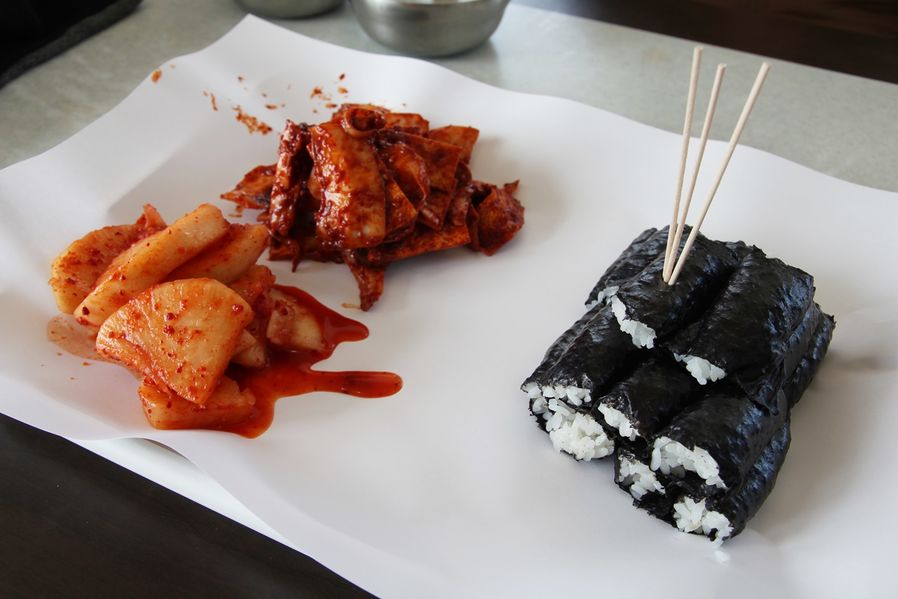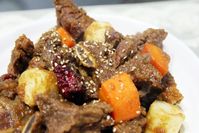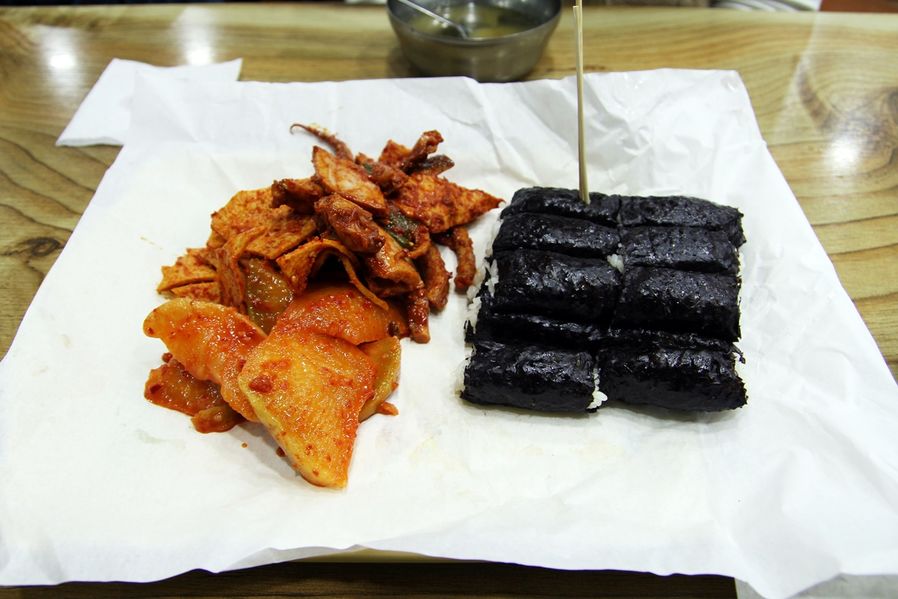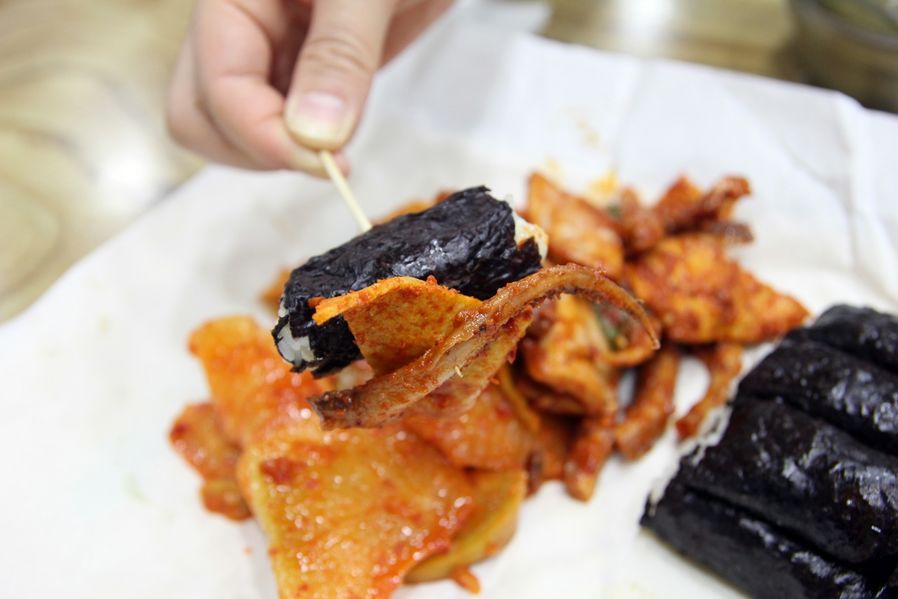1.Ingredients for Chungmu Gimbap
-Primary ingredients: Dried laver and cooked rice
-Secondary ingredients: Squid (seasoned with chili powder) and radish (seasoned with chili powder and ripened)
2.Taste evaluation
-Spicy:★★☆☆☆
-Salty:★★☆☆☆
-Sweet:☆☆☆☆☆
-Sour:☆☆☆☆☆
3. Introduction to Chungmu Gimbap
When you hear Gimbap, you might think of Japanese Gimbap, rice wrapped and rolled in dried laver with various ingredients seasoned with sour sauce. But Chungmu Gimbap is completely different from Japanese Gimbap. This is Korean Gimbap you can taste anywhere in Korea as it got famous as local food in Tongyeong.
Chungmu is an old name for Tongpyeong where Cungmu Gimbap was invented. As the biggest fishery city in the southern coast of Korea, there are numerous fishermen who work in the fishing industry for a living in Tongyeong since a long time ago.
Chungmu Gimbap was packed lunch for fishermen at the time.
Wives of fishermen who felt bad for their husbands skipping meals on the boat during work started to pack Gimbap for their husbands in the 1930s. But in hot summer days or on the days they stay on the boat for a long time far away from ashore, Gimbap went bad so they could not eat it.
So what they came up with was Gimbap with no vegetables that might go easily bad and served with Kkolttugi-muchim(baby octopus seasoned with vinegar and other condiments) and radish Kimchi that do not go bad easily.
This is called Chungmu Gimbap and started to be popular as a Tongyeong’s native food.
Event called Gukpung81 was once held in Yeoui-do in 1981. Since then,
Chungmu Gimbap was sold in Seoul, aired on TV and known throughout
the country.
Chungmu Gimbap looks and tastes simple, simpler than Japanese Gimbap with ham, fish cake and various vegetables for sure.
Japanese Gimbap is seasoned with sour and sweet sauce but no seasoning is used for Chungmu Gimbap and it’s just rice rolled in finger-sized dried laver.
And Ojingeo-muchim seasoned with spicy sauce and sour radish Kimchi are served together as side dish.
You eat one finger-sized Gimbap and one piece of Ojingeo-muchim or radish Kimchi.
You might be disappointed by its taste at first because it’s nothing special at all. But strangely enough, you will find yourself wanting it more and more.
It’s dried laver and rice with no seasoning but this salty dried laver and chewy rice taste so good.
Kkolttugi-muchim seasoned with red sauce seems spicy but it’s properly salted, not too spicy or sweet. Well-ripened radish Kimchi is pungent yet crunchy that goes well with rice.
As a fishery city with high fish catch rate, Tongyeong offers you many seafood to try and it is getting its reputation as a fisher city as well.
If you’re traveling Tongyeong, I want you to try its local dish, Chungmu Gimbap.
4.Kinds of Chungmu Gimbap
Since Chungmu Gimbap was cooked in one specific area called Tongyeong (current name for Chungmu) there’s only one kind.
You will find restaurants who claim to be the original in front of Tongyeong Passenger Terminal. The taste would be slightly different depending on the cook of each restaurant.
5.How to enjoy Chungmu Gimbap even more
Chungmu Gimbap is one of special foods of Tongyeong but you can try it anywhere in Korea.
Especially there is one place with a long history in Myeongdong that is popular enough to open two more restaurants where you can even see many foreign tourists eating this dish.
BUT!
It’s a vacation season now so I want you to try it in Tongyeong. I found that Ojingeo-muchim or radish Kimchi is spicier or sweeter in other cities in order to attract young customers.
Chungmu Gimbap in Tongyeong does not have too strong flavor that makes you addicted to the taste.
Some might get upset to see Chungmu Gimbap for its sloppy look.
It’s because rice, Ojingeo-muchim and radish Kimchi are all served on a piece of paper on the plastic plate instead of separate dishes. Plus you can’t even find chopsticks or fork, just wooden sticks.
There’s a story behind this.
As mentioned above, Chungmu Gimbap was invented for fishermen and they used to pack their meal in vinyl or paper to eat it on the boat.
And the tradition still goes on.
It might be uncomfortable but I want you to have an interesting experience eating rice with one wooden stick.

Canon EOS 550D | f/6.3 | iso 100 | 2013:02:08 13:48:15 | Flash did not fire, compulsory flash mode | 19mm












